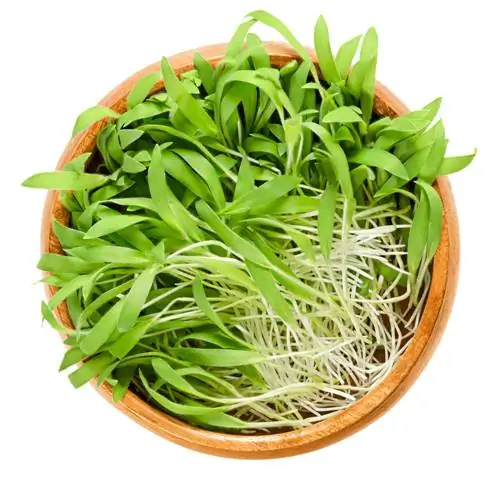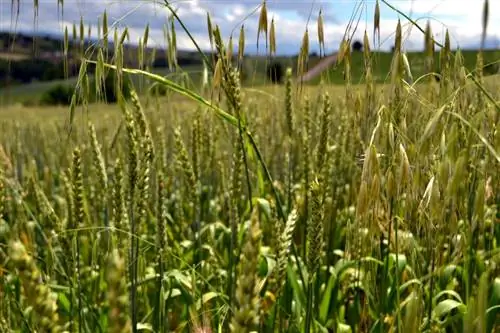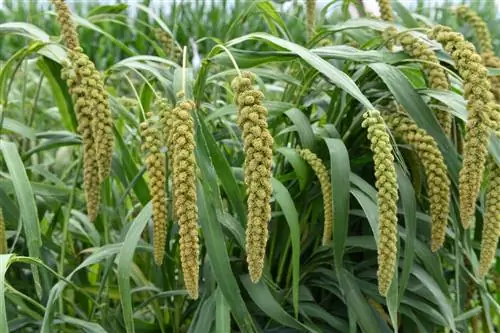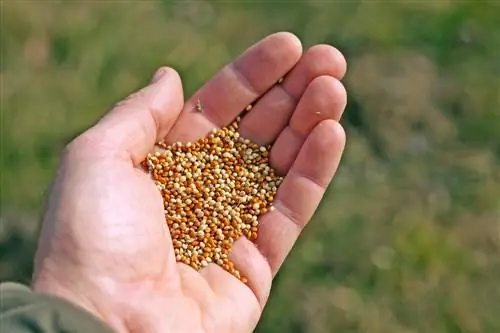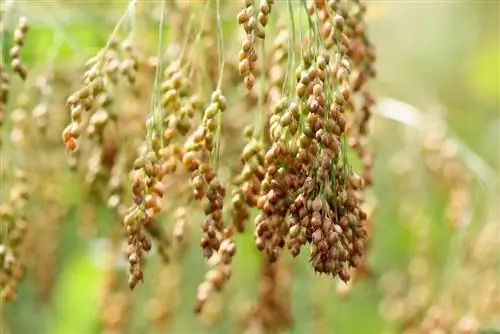- Author admin [email protected].
- Public 2023-12-16 16:46.
- Last modified 2025-01-23 11:21.
Salad dressing was yesterday. From now on, home-sprouted millet grains will decorate your raw food dishes. The aromatic grain not only provides more taste, but also makes a major contribution to a complete, he althy diet. Making sprouted millet is also very easy. Find out how to do it here.
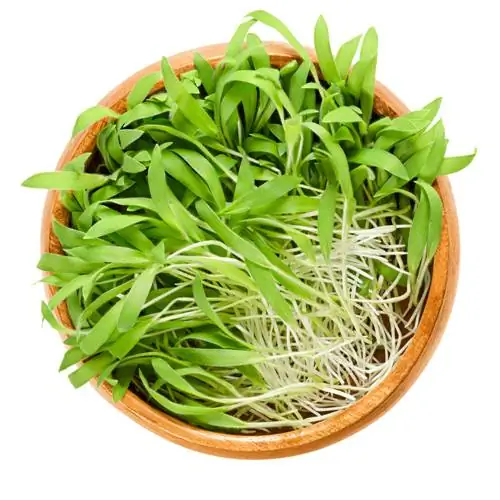
How to germinate millet properly?
To germinate millet, soak the grains in a germination jar with cold water overnight, rinsing and draining them twice daily. After a short time the grains have germinated and are ready to eat, but they can continue to grow and be planted in the ground.
Instructions
You need:
- a germination jar with a sieve integrated into the lid
- Millet
- Water
How to do it:
- Soak the millet in three times the amount of cold water overnight
- store the glass in a tilted position in a bright location
- In the following days, rinse the millet twice a day with water and then place the jar back in the tilted position
- After just a short time you should recognize the first germs
- The sprouted millet is already ready to eat in this state
- If you wait any longer, a small root will even form that you could plant in the ground
- Depending on the desired size, rinse the millet one last time before harvesting the grains and adding them to your dishes
Storage requirements
Millet only germinates under the right temperature and humidity. Make sure that the grains are always covered with water. In addition, the glass must definitely have holes to ensure the oxygen supply. Dried millet lasts for around a week in the refrigerator. To extend shelf life, dry the grain in the sun after germination. When it comes to grains, it is definitely worth preparing large portions in advance, which should, however, be used up over the course of the week.
Advantages over other types of grain
In contrast to rye, corn and C., millet has an incredibly extensive biodiversity. There are countless varieties available, from brown millet to mild golden millet, all of which taste different. This always ensures variety at the dinner table, even in sprouted form.
He alth Benefits
Millet is already he althy. However, when germinated, the he alth benefits increase as the biological value of the vitamins and minerals increases. This means the body can absorb them better.
Uses for sprouted millet
- in salads
- For baking
- in fruit juices
- in muesli
- sprinkle on bread

